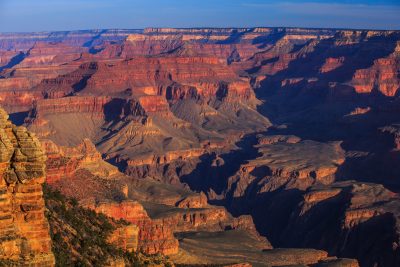Tusayan, Developers Begin New Push for Massive Grand Canyon Project
Development Will Overwhelm Park Capacity, Failing Infrastructure, Water Supply

An Italian company has tinkered with its years-old plan to build a sprawling development on the doorstep of Grand Canyon National Park. But the mega-project would be just as dangerous to water resources, wildlife and visitors. It would also flood the night skies of one of the nation’s most iconic national parks.
The Tusayan Town Council is set to vote Thursday, Jan. 23, on submitting a slightly revised application from the town and Stilo Development Group to the Kaibab National Forest. A U.S. Forest Service permit is required to build roads and utilities across Forest Service land.
“We must stand against greedy developers who see the Grand Canyon as nothing but a cash register,” said Robin Silver, a cofounder of the Center for Biological Diversity. “This latest scheme still threatens catastrophic harm to the canyon’s life-giving springs, the millions of visitors who flock to this natural wonder and the native people who’ve called the canyon home for millennia. It’s the same pig with a new shade of lipstick.”
It’s the third time in six years that Stilo and Tusayan officials have pushed for the massive development on private land just outside Grand Canyon National Park.
The proposal would transform the small community of Tusayan into a sprawling complex of high-end homes, malls and resorts a mile from Grand Canyon National Park’s boundary. Development plans include 2,200 housing units, 2,500 hotel rooms, a conference center, “edutainment” complex, restaurants, shopping malls, a health spa and possibly a dude ranch.
“For 20 years the public has been saying no to Stilo’s terrible development proposals, and this is more of the same,” said Alicyn Gitlin, conservation coordinator for the Sierra Club’s Grand Canyon Chapter. “This proposal, which includes double the hotel room capacity of the entire town of Williams and thousands of new vacation homes, will drain water supplies while destroying the forest. There is no plan for trash or traffic, and the only plan for water is to truck it in from an undisclosed location.”
In 2016 the Forest Service rejected Tusayan’s original right-of-way application, concluding that the development “is not in the public interest” and “opposed by local and national communities, would stress local and Park infrastructure, and have untold impacts to the surrounding Tribal and National Park lands.” Then-park Superintendent Dave Uberuaga called the Stilo proposal one of the greatest threats to the park in its 100-year history.
In September Tusayan and Stilo submitted a new right-of-way application to the Forest Service. The latest application, which the town council will consider Thursday, moves the location of some roads and water lines but doesn’t lessen the threats to water, wildlife and people.
Pumping groundwater from the local aquifer to supply thousands of homes will dry up springs and seeps that support wildlife and recreation on the park’s South Rim. This could also spell catastrophe for Havasu Creek, the lifeblood of the Havasupai Tribe. It would also harm the Grand Canyon’s incredible biodiversity, which include some of the most threatened ecosystems on Earth.
Stilo’s development would stress the park’s aging infrastructure, which is more than $300 million behind in deferred maintenance. The project would also flood the park’s world-famous dark skies with light pollution and dramatically increase traffic congestion. Added traffic and air pollution would harm wildlife, fragment important animal habitat, and interfere with antelope fawning grounds.
“Arizona is the Grand Canyon State, not the Mega-mall State,” said Silver. “It’s time for Tusayan’s council members to show some courage and remember where they’re from. They must stand up and protect Arizona’s crown jewel for future generations.”
*
Note to readers: please click the share buttons above or below. Forward this article to your email lists. Crosspost on your blog site, internet forums. etc.
Featured image is from Wikimedia Commons

